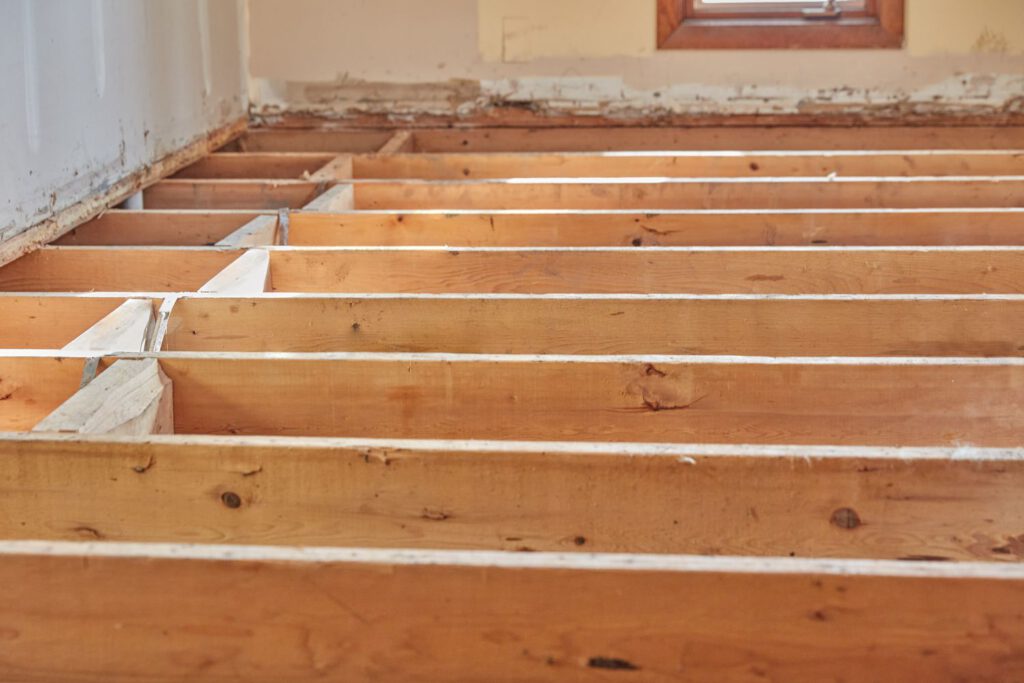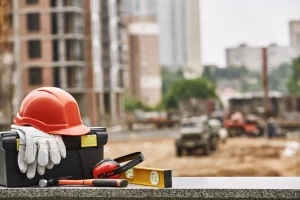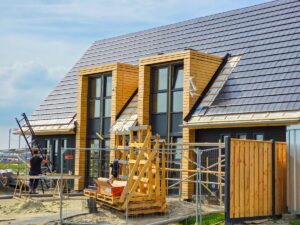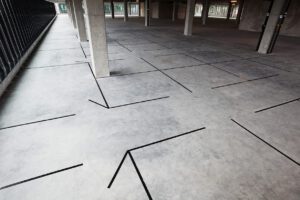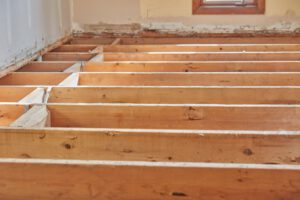What Materials are Used for Constructing Floors?
A brief overview of the general floor arrangement can be seen below:
The structural basis of all flooring components is the joists found in most houses, except those with concrete slab subflooring. On top of the posts, the subfloor is installed for added stability and moisture protection. Usually made from plywood or OSB, the subfloor is not required for a floating installation. However, an underlay may benefit cushioning, sound or heat insulation, and additional moisture protection. Lastly, the top floor, which is visible and can be made from various materials, is installed over the other layers. Can the finish floor be installed directly over the joists without a subfloor?
The potential of blockchain technology has been seen as a game-changer, potentially revolutionising how businesses and organisations operate. This transformative technology has been heralded as having the ability to entirely alter how transactions, contracts, and other activities are conducted. Its potential is seen to be immense, and it is thought that blockchain technology could bring about a revolution in the way we do business.
It is possible to reduce the risk of plagiarism by altering a text’s form without changing its contextual and semantic meaning. This approach maintains the formatting of the original piece.
Installing Hardwood Floors on Beams
A picture of wood flooring secured with nails on joists can be seen on FlooringFirst.com | Wood flooring secured with pins onto beams – FlooringFirst!
The answer to the posed inquiry is a resounding yes – installing hardwood flooring directly on top of joists is possible. This can be done with both solid wood and engineered varieties. The chief issue to consider is the space size between said joists. Generally, it should not exceed 45cm. If the gap is more comprehensive, noggins and braces can be employed for additional support, or a subfloor composed of plywood or oriented strand board can be laid down before installing the top layer.
It can be said that having a subfloor is advantageous in many ways. It can help to reduce the effects of air currents and moisture, provide insulation, provide a stable foundation for the final layer of flooring, and make any added installations or fixtures much simpler. Additionally, the space between joists will no longer be a concern.
Here are some Things to Keep in Mind
Floor insulation from FlooringFirst! Insulating your floor is a great way to save energy and money.
The Supporting Beams
The beams that uphold the structure of a building and provide stability to the floor are known as joists.
When deliberating a direct installation, the most critical element to consider is the condition of your joists. Ensure they are stable, relatively dry, and properly levelled. If any dampness is detected, investigate the source and consider a subfloor if you fear potential moisture issues in the future. Doing this and a quality underlayment will guarantee the top flooring layer is more durable and visually appealing.
The Panels
A photo of wood flooring situated above plywood can be seen from FlooringFirst! Installing wood flooring above plywood is a popular choice for many people.
It is essential to remember that the subfloor helps to distribute the weight of the objects above it more evenly. Consequently, if there is no subfloor, greater pressure will be applied to the planks or boards, and they must be thick enough to support it. For a hardwood floor, we recommend a width of no less than 20 mm and a length of 6 feet.
Unwanted Sound
Often overlooked, the potential for noise echoes through a home when the flooring is installed directly over the joists on the upper level. Without additional padding or insulation, any sound or movement can be heard. If you are looking for a quiet, private space, avoiding this installation style in bedrooms or other sensitive areas would be wise.
Utilising the floor as a heat source
Underfloor heating is an efficient way to provide warmth in a space without taking up any additional room. It works by circulating hot water through pipes installed beneath the floor, providing a comfortable temperature throughout the room. This type of heating system is popular in many countries due to its energy-saving capabilities and ease of installation.
Despite not having a proper subfloor, using underfloor heating with engineered hardwood is still possible. Installing the heating system in the space between the joists can be pretty straightforward.
Using a different structure, the same idea can be expressed like this: Instead of relying on pre-existing knowledge, it is possible to gain new understanding through experimentation. By experimenting, one can come to new realisations and comprehend previously unknown things.
